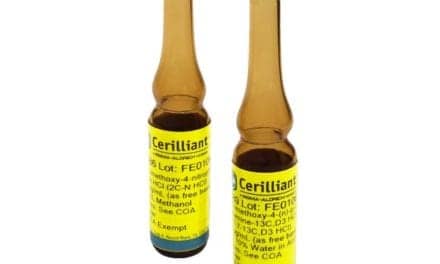This is a companion article to the feature “Streamlining Sample Preparation.”
In collaboration with Run Zhang Shi, MD, PhD, clinical assistant professor of pathology and assistant director of the clinical chemistry and immunology laboratory at Stanford Health Care (Stanford, Calif), manual sample analysis methods were compared to automated sample analysis methods using a tip-on-tip dispersive pipette extraction technology.

Table 3. Comparison of testosterone levels detected in patient serum samples using internally validated manual methods and an automated sample analysis on the Microlab Nimbus and tip-on-tip chemistry.
Patient serum samples were drawn and analyzed for testosterone levels using Stanford Health Care’s internally validated manual methods. The results were blinded, and samples were then delivered to DPX Technologies, La Jolla, Calif, for automated analysis using the tip-on-tip dispersive pipette extraction technology and a personal pipetting workstation from Hamilton Robotics, Reno, Nev.
In the hands-free automated method, serum samples were protein-precipitated using wide-bore tips. The resulting supernatant was then aspirated, and the wide-bore tip was coupled to a patent-pending filter tip, from which the purified supernatant was then dispensed into a microplate for LC-MS/MS analysis.
All together, 30 patient samples were processed in duplicate using the tip-on-tip method on a Hamilton Microlab Nimbus liquid-handling workstation. All 30 patient samples correlated (bias <20%) with the known concentrations from the validated Stanford method results (Table 3). Calibration curves were linear over three orders of magnitude (R2 >0.998). Quality controls and NIST standards were added and all met acceptance criteria, within 20% bias from target.



